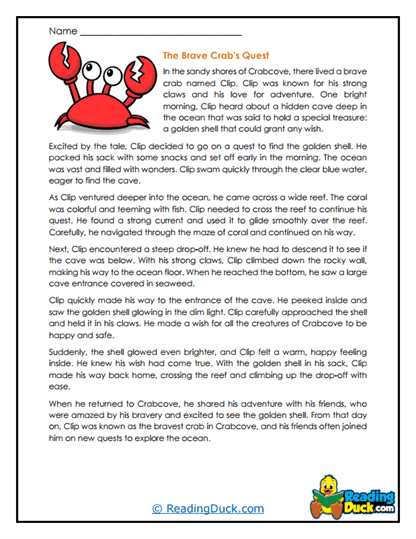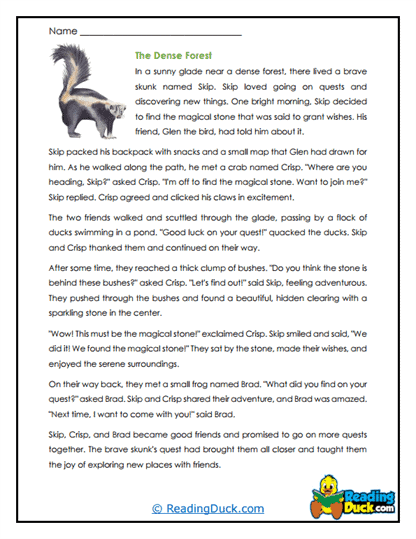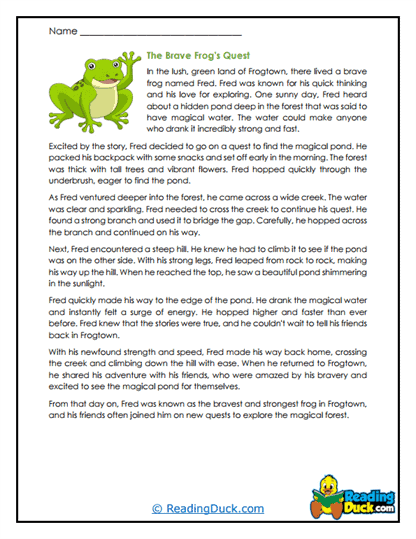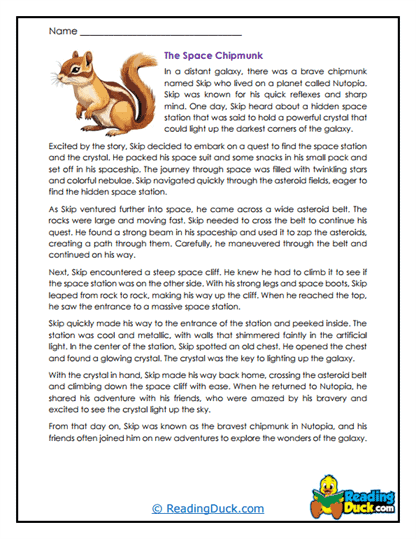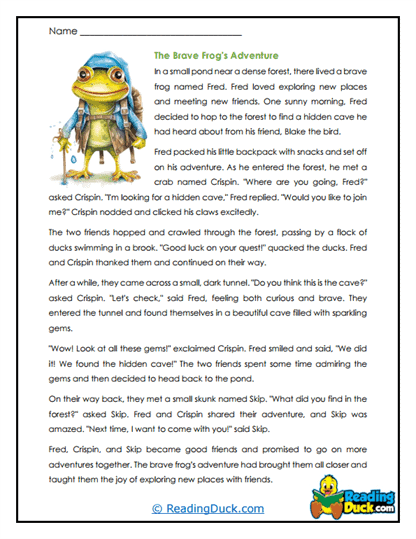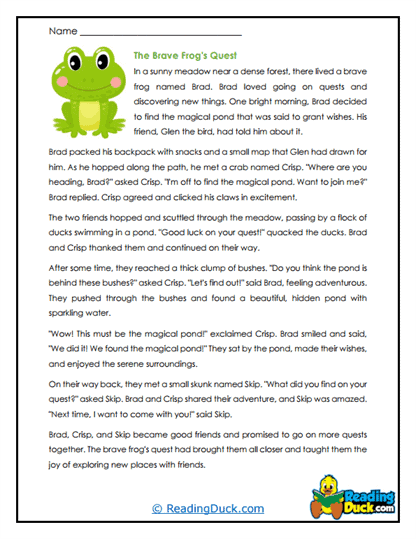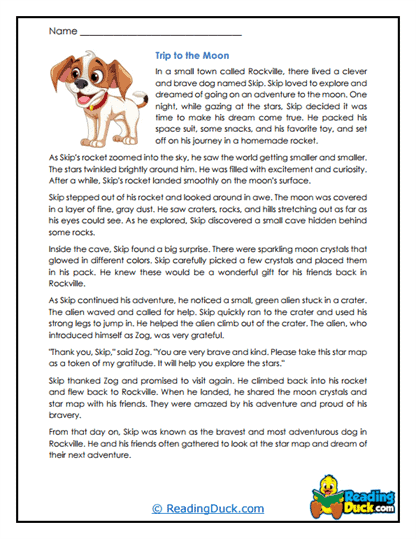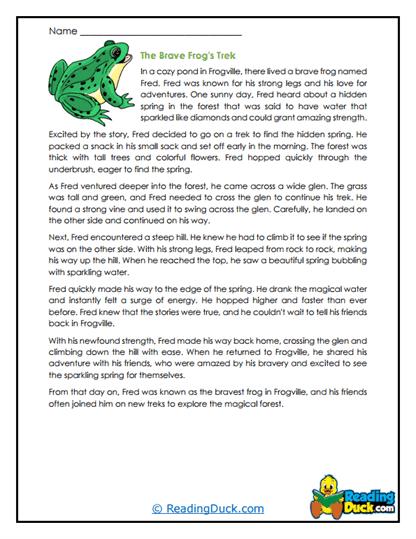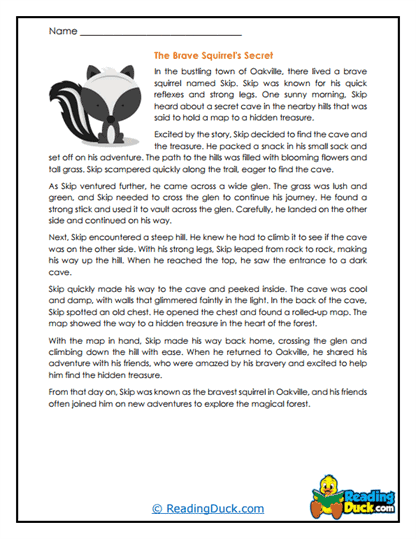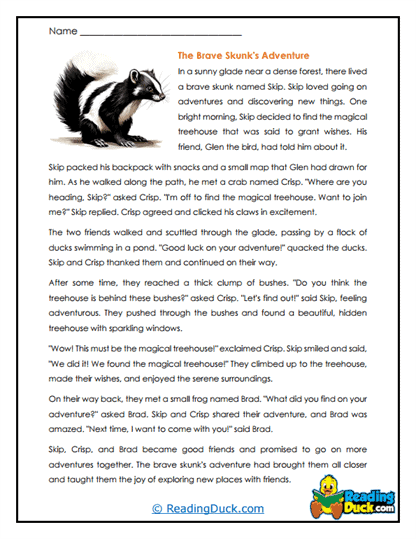CCVC Reading Passages Worksheets
About Our CCVC Reading Passage Worksheets
Our CCVC (Consonant-Consonant-Vowel-Consonant) Reading Passages Worksheets are crafted to help students develop key phonics and reading skills. These worksheets specifically focus on CCVC word structures, providing targeted practice that helps students decode and recognize common consonant clusters found at the beginning of many words. Through carefully constructed reading passages, students will gain repeated exposure to CCVC word patterns, allowing them to strengthen both their decoding abilities and overall reading fluency.
Each worksheet in this collection is available in PDF format, ensuring they are easy to view, download, and print for both classroom and home use. Additionally, every worksheet comes with a downloadable answer key, providing educators and parents with an efficient way to check students’ progress and offer feedback. This practical format ensures that CCVC Reading Passages Worksheets are easy to integrate into any learning environment, making them a valuable tool for phonics instruction.
Key Benefits of the CCVC Reading Passages Collection
The CCVC Reading Passages Worksheets provide several key benefits that contribute to the development of essential literacy skills. These worksheets help students focus on important phonics patterns, improving their ability to decode and understand more complex words. The following are some of the most significant advantages of using this resource:
- Targeted Phonics Instruction: These worksheets focus specifically on CCVC word patterns such as "trap," "flag," "plan," and "frog," providing repeated practice with these key word forms.
- Strengthened Word Recognition: By focusing on CCVC structures, students become more comfortable recognizing and reading common words that follow this pattern, leading to improved vocabulary and word recognition.
- Enhanced Decoding Skills: The CCVC word structure challenges students to blend sounds and segment words effectively. With regular practice, students improve their decoding abilities and become more confident readers.
- Reading Fluency Development: By practicing CCVC words in context through reading passages, students build fluency as they work on both speed and accuracy in reading.
- Meaningful Application of Phonics: These worksheets allow students to apply phonics knowledge in real reading scenarios, rather than isolated word drills. This helps strengthen their understanding and retention of phonics patterns.
Practical Strategies for Classroom Use
Educators can use the CCVC Reading Passages Worksheets in various ways to enhance phonics instruction and engage students in meaningful learning. Below are several practical strategies for incorporating these worksheets into classroom activities:
- Group Reading Sessions: Use the reading passages for group reading exercises, where students can take turns reading aloud. This promotes a collaborative learning environment and gives students an opportunity to practice pronunciation and fluency with CCVC words.
- Warm-Up Activities: Start your phonics lessons with a short passage from these worksheets as a warm-up exercise. This helps students focus on CCVC word structures and sets the tone for the day’s phonics lesson.
- Phonics Centers: Integrate the worksheets into literacy centers where students can independently practice reading CCVC passages or work with peers in small groups.
- Independent Reading Practice: Assign the passages as individual practice during class to reinforce phonics skills in a structured and focused way. Students can read through the passages and work at their own pace.
- Formative Assessment: Use the answer key provided with each worksheet to assess student progress and identify areas where additional support or instruction may be needed.
These strategies help make the most of the CCVC Reading Passages Worksheets, providing a wide range of instructional opportunities in the classroom.
Using CCVC Reading Passages for Home Practice
Parents and caregivers can also use the CCVC Reading Passages Worksheets to support their child's reading development at home. Whether for nightly reading practice or as a way to reinforce classroom learning, these worksheets are a flexible and effective tool for building phonics skills. Here are some ways parents can integrate these worksheets into daily reading practice:
- Daily Reading Routine: Incorporate a CCVC reading passage into your child's daily reading routine. Reading these passages aloud each night will reinforce the phonics skills they are learning at school while also improving fluency.
- Parent-Child Reading Sessions: Read the passages together with your child, taking turns reading aloud. This shared reading experience helps improve pronunciation and gives children the chance to hear the correct use of CCVC words in context.
- Homework Support: Use these worksheets to supplement classroom instruction. Review the passage together, and then use the provided answer key to check your child's progress and understanding of CCVC word structures.
- Repeated Reading for Fluency: Encourage your child to read the same passage multiple times. Repeated reading helps improve reading speed and fluency, as students become more familiar with the words and their sounds.
- Positive Reinforcement: Track your child's progress as they complete worksheets, offering positive feedback and praise for their efforts. This motivates children to continue practicing and improving their phonics skills.
By incorporating these worksheets into home practice, parents can play an active role in supporting their child's literacy growth.
Developing Phonics Skills with CCVC Word Patterns
CCVC word patterns are fundamental to early phonics instruction, as they represent some of the most common word structures students encounter in their reading. These patterns are composed of two consonants followed by a vowel and then another consonant, such as:
- Common CCVC Words: Examples of CCVC words include "step," "clip," "brag," "grab," and "flag."
- Initial Consonant Blends: CCVC words often feature initial consonant blends, such as "fl" in "flag" or "pl" in "plan."
- Short Vowel Sounds: Many CCVC words include short vowel sounds, such as the "a" in "trap" or the "e" in "step."
By focusing on CCVC word patterns, these worksheets help students understand how consonant blends and vowel sounds work together to form words. This foundational skill is crucial for decoding more complex words as students progress in their reading development.
Encouraging Reading Fluency Through Regular Practice
Reading fluency is a critical skill for young learners, as it directly impacts their ability to comprehend what they are reading. The CCVC Reading Passages Worksheets provide meaningful opportunities for students to practice fluency by applying their phonics knowledge in context. Regular practice with these passages promotes fluency by:
- Improving Reading Accuracy: As students repeatedly encounter CCVC word patterns in passages, they become more accurate in decoding and reading these words aloud.
- Increasing Reading Speed: Fluency involves reading with speed and accuracy. Practicing CCVC words within connected text helps students develop the ability to read quickly and smoothly.
- Strengthening Comprehension: Fluent readers can focus more on understanding the text rather than decoding individual words. The passages in these worksheets support comprehension by presenting CCVC words in meaningful, engaging contexts.
Regular practice with CCVC reading passages not only builds students’ fluency but also supports their ability to read with confidence and comprehension.
Tips for Maximizing the Use of CCVC Reading Passages Worksheets
To get the most out of the CCVC Reading Passages Worksheets, educators and parents can follow these practical tips:
- Set Clear Learning Goals: Before using each worksheet, set specific goals for the lesson, such as improving decoding skills or practicing a particular consonant blend.
- Encourage Repeated Reading: Repeated exposure to CCVC words helps students build fluency. Encourage students to read each passage multiple times to increase their reading speed and accuracy.
- Use as Part of Homework: Assign a CCVC passage as part of students’ weekly homework to ensure they continue practicing phonics skills outside the classroom.
- Incorporate into Group Activities: Have students work together in pairs or small groups to read the passages aloud, allowing them to learn from each other and gain confidence in their reading.
- Track Progress and Celebrate Success: Use the answer key to monitor students' progress and celebrate improvements in their phonics and fluency skills. Positive reinforcement helps motivate students to keep practicing.
By following these tips, educators and parents can help students make the most of the CCVC Reading Passages Worksheets, ensuring consistent phonics practice and steady reading progress.
Conclusion
The CCVC Reading Passages Worksheets offer an invaluable resource for teachers, parents, and students alike. By focusing on CCVC word patterns, these worksheets provide targeted phonics practice that strengthens students’ decoding skills, word recognition, and reading fluency. Available in convenient PDF format and complete with answer keys, these worksheets are perfect for use in both the classroom and at home.
With regular practice, students will become more confident and fluent readers, mastering foundational phonics patterns that are essential to their overall literacy development.
